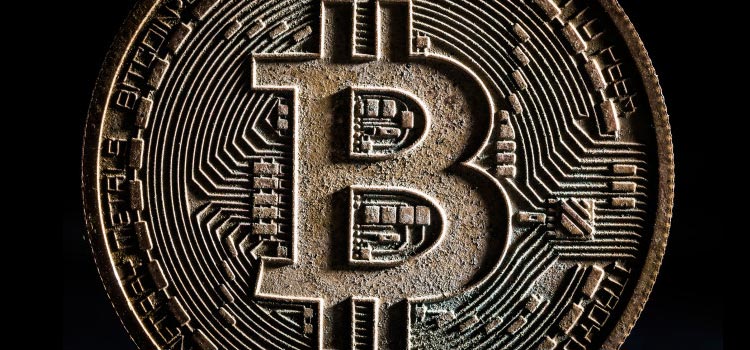Bitcoin
Bitcoin Could Become a “Multi-Network” Cryptocurrency with New ‘Drivechain’ Sidechain Proposal

Four years ago, a team of developers proposed using sidechains to expand the capabilities of the bitcoin network. Earlier today, that idea became much closer to reality when the sidechain project arrived on testnet.
As spotted by Coindesk, the project is led by Paul Sztorc, director of research at blockchain startup company Tierion. A test version of the code called “Drivechain” was released on testnet earlier today.
Sztorc announced the news on his blog.
The test version is being released nearly three years after the idea for bitcoin sidechains was first conceived in November 2015. The origins of bitcoin sidechains date back even further: in 2014, developers proposed using sidechains to expand the functionality of the bitcoin network. The idea was to compete with Ethereum, which was just rolling out test versions around that time.
Developers proposed bitcoin sidechains to allow the creation of branches on the bitcoin network that would function in a way similar to Ethereum tokens. Cryptoassets in these bitcoin sidechains could be custom-programmed to suit the needs of various applications – similar to how developers create ERC-20 tokens on Ethereum for their decentralized apps.
Bitcoin’s sidechain proposal was led by bitcoin development company Blockstream after being proposed by Sztorc. Over time, the development team started referring to the sidechain project as a “multi-network coin” idea.
Here’s how Sztorc described a “multi-network” bitcoin in a recent blog post:
“If this ‘multi-network coin' idea is found to be viable, it has profound implications for the crypto's most salient problems. Bitcoin would be able to copy, without controversy, any technology, including: larger blocks, Turing-completeness, and ring signatures.”
How Does Drivechain Work?
On September 25, a testnet version of bitcoin’s sidechain concept was released on testnet. This is the first code release for the sidechain concept – so it’s kind of a big deal.
The project overall is called Drivechain, although the dev team is calling the first testnet release TESTDRIVE.
Drivechain’s testnet version features branches showcasing how the code can add additional characteristics in such a way that they would apply only to a portion of the cryptocurrency. It would effectively create a multi-network bitcoin. You could have a reset proof of work algorithm, for example, and one-way replay protection, on certain coins.
Key features of today’s Drivechain launch include:
- New PoW algorithm (with reset difficulty)
- UTXO loader that is much faster than doing an initial chain-sync and also allows for the easy release of other versions (say, for BCH or BTG) while letting developers mint their own testnet coins
- One-way replay protection, which replays all transactions unless owners say otherwise, at which point owners get permanent replay protection; this would force all exchanges to list the new coin in practice while also equalizing transaction fees for miners across chains
Sztorc also uploaded a “usage tour” showing how the testnet implementation can be used to:
- Send BTC From the mainchain to a sidechain
- Use the sidechain (send BTC from ourselves to ourselves)
- Send the sidechain-BTC back to the mainchain
The usage tour tutorial walks you through everything. You can get the source code from Github here.
Will Drivechain Ever Be Added to Bitcoin?
Drivechain is available on testnet. While some wish to add it to the main bitcoin protocol, others think it detracts from the purpose of bitcoin.
Sztorc believes that if Drivechain’s code is added to bitcoin, then it would solve one of the biggest problems on the bitcoin network:
“There would be no need to fight about which features bitcoin ‘should’ have (or over which features ‘define’ bitcoin).”
There’s also a chance that Drivechain could be implemented as a soft fork.
Ultimately, a project like Drivechain would significantly increase the capabilities of the bitcoin network. The protocol is available on testnet today, although it’s unclear if we’ll ever see a sidechain protocol like this implemented into bitcoin in the future.
Bitcoin
Will Bitcoin’s Price Rebound or Continue to Fall? The Value Perception

Bitcoin has had a chaotic few months. The price of one Bitcoin crossed the $5,000 mark in October, hit $19,000 in the beginning of December, and then plummeted down to $10,000, where it's still hovering today. A lot of new investors lost a lot of money, and analysts are scrambling to figure out what it all means. Will Bitcoin ever return to its former heights? Was it just another textbook bubble that popped for good? No one can be certain what the future holds for Bitcoin, but this article will explore the claims coming from both sides.
Why Bitcoin Was a Bubble That Has Popped For Good

Inexperienced Investors
The most obvious evidence that Bitcoin was a bubble has already been stated: the price skyrocketed by thousands of dollars and almost 300% in less than two months. The rise also corresponded to a sharp increase in media coverage, creating a feedback loop as new investors were drawn to Bitcoin investing. This means that a lot of the investors buying Bitcoin in that period probably knew almost nothing about the technology and were buying it because they saw the price rising. This kind of behavior is a recipe for inflating the price of an asset well above its actual value, which is the definition of a bubble.
New Regulations
Asian governments, especially China and South Korea, have begun to regulate Bitcoin trading and Bitcoin mining for fear of its effects on their economies. These regulations have hurt Bitcoin trading, and some observers point to it as the main reason for the decline in Bitcoin's price. Up until now, Bitcoin has benefited immensely from a lack of regulation, but this may change in the future, which could make a recovery very unlikely
Lack of Acceptance
There are only around 100 companies that accept Bitcoin as currency, and others have recently stopped due to its volatility. This low acceptance level makes it difficult for Bitcoin to function as a viable currency, which is supposed to be its purpose. Furthermore, Bitcoin is far from the only cryptocurrency out there and, if it remains this volatile, some of those others might start to squeeze Bitcoin out. The future doesn't look great for Bitcoin, but that's not the whole story.
Why Bitcoin's Price Will Rise

Volatility is Normal
Portfolio manager and cryptocurrency veteran Jeet Singh made waves at the World Economic Forum in January when he said he expected Bitcoin to hit $50,000 in 2018. He claims that Bitcoin's recent volatility is normal for any new technology and points to the volatility that Microsoft and Apple experienced when they went public. It's just part of being in a new sector, and seasoned cryptocurrency investors are used to it.
The Technology is Inherently Valuable
Despite recent losses, Bitcoin and the blockchain technology it is built on are fundamentally valuable. Many companies are already investing millions of dollars in blockchain, a technology that allows for efficient, trustworthy, decentralized databases, and because Bitcoin was the first blockchain and is still the biggest, it has an incredible amount of intrinsic value.
Fundamental Value as a Currency
Furthermore, Bitcoin has value as a currency. There are huge advantages associated with using Bitcoin, such as ultra-low transaction fees, high levels of security and privacy, and the fact that there's no need for third-party verification. Ideally, as the media hype dies down and prices stabilize, more and more companies will begin using Bitcoin to harness these advantages, and its acceptance as a currency will rise again.
There are certain niche roles that Bitcoin is perfectly suited for. It is a great option for people making international transactions because there is no governmental oversight; people in countries with inflationary currencies often use Bitcoin because its inherent deflationary nature allows them to maintain purchasing power; and, for better or for worse, it is the ideal currency for making illegal transactions. All of these factors that make Bitcoin attractive will raise its value in the long term. Investors just need to be patient.
There are reasonable voices on both sides of the argument, but it's still too early to tell what will happen. One Bitcoin is still worth around $10,000, so this ride is far from over.
Bitcoin
2018: The Death of Bitcoin Year Or Cryptocurrency Blockchain Era Birth

As of writing this article, Bitcoin is experiencing a price bloodbath. The virtual currency has been the victim of a relentless market sell-off that has no near end in sight. While a daily 30% drop in value is not uncommon in Bitcoin, well known for its extreme price volatility, something might be different this time.
The average investor or speculator in BTC may not fully understand the reasons for this recent sell-off. At the peak of the mania in December 2017, many uneducated investors entered the market, driven by the potential of realizing considerable gains in their capital. Credit cards were maxed out, second mortgages arranged, and loans drawn to provide these investors with the fiat currency needed to purchase their precious Bitcoin. Unfortunately for them, the biggest financial bubble ever began to deflate shortly after that, leaving many investors “HODLing” the bag as the price tanked.
“HODLers” (the name given to long-term Bitcoin investors) may still have a lot of pain left to endure in 2018 as the price drops further into oblivion. If the pace of the current bloodbath continues and joined by further sell-offs, could 2018 be the year for the death of Bitcoin? Here are four existential risks to the cryptocurrency in 2018, any of them could be a catalyst for the pending destruction of BTC, ignore them at your peril.
The Four Horsemen of the Bitcoin Apocalypse
#1 Government Crackdowns

Bitcoin is a decentralized currency. This means that it cannot be controlled by any government authority or central bank in the same manner as national fiat currencies. In early 2016, Japan made international cryptocurrency headlines when they announced the acceptance of Bitcoin as legal tender in Japan. Other East-Asian countries such as Vietnam followed suit, legalizing the exchange of BTC for fiat currency as well as purchases of goods and services with the virtual currency.
Despite these nations' progressive steps, other countries did not view Bitcoin in the same light. The Chinese government announced a total ban on crypto trading and advertising in early February 2018. The Chinese cited the reason for the ban as Bitcoin facilitating “illegal fund-raising and other types of illegal financial activities,” pointing to fraud and pyramid schemes in exchanges and the ICO market.
In reality, the Chinese government is most concerned with the capital flight from the country. Chinese citizens use BTC to circumvent capital exchange controls, giving them the opportunity to move their wealth out of China to avoid depreciation in the Yuan. All the major exchanges and mining operations have relocated out of China to neighboring Japan and South Korea to continue their business activities.
Bitcoin is currently being scrutinized by the United States as well, with the IRS and SEC launching probes into cryptocurrency exchanges, investors, and speculators for possible fraud and or tax evasion. The lack of regulation in the crypto marketplace, particularly in the ICO market, is a grave concern for western governments and we can expect to see further crackdowns in the future.
#2 Unplanned Obsolescence

Bitcoin transfers occur between peers with no need for a third party, such as a bank. Before the Bitcoin bubble grew to its astronomical heights, transaction fees were low and completed within a few hours. As miners released new blocks in the algorithm, issues of scalability began to arise. Transaction fees started to increase and transaction times slowed.
The industry solution to this problem was the implementation of a network upgrade known as SegWit2X. The software upgrade consisted of changing the block size from 1MB to 2MB to facilitate faster payments and cheaper fees. However, the mining community resisted SegWit2X with less than 30% of miners supporting it.
The lack of consensus around the SegWit2X fork shows that the Bitcoin community, particularly the miners, are resistant to change. Without an upgrade to the blockchain via a “hard fork,” Bitcoin is set to fade away into the distance as costs around mining and transacting Bitcoin increase. The result will be a flight from BTC to a cryptocurrency that is not affected by these BTC blockchain restrictions.
#3 Bitcoin Futures

The violent, sudden rise of Bitcoin captivated the attention of sophisticated investors, starved for yield in today's modern markets. As the price skyrocketed, it was only a matter of time before an institution launched a financial product based on BTC. The Cboe and CME Group were the first to answer the call, launching Bitcoin futures in December 2017.
The first expiries of these futures contracts saw them mature out of the money, with the price of the contracts dropping over 40% from their launch. Bitcoin whale's short futures contracts into selling pressure, making money as the price drops toward the expiry date. For every dollar lost on the open market price, the whales make a dollar on futures contracts they hold.
Futures contracts have been identified by the precious metals community, as a tool for manipulation of the commodity markets, particularly gold. It would seem from the data that a few large players are using the same manipulation tactics in the Bitcoin futures markets. The next expiry of futures contracts is due mid-March for Cboe futures, and at the end of March for CME futures. It will be interesting to keep an eye on the price action in the next contract period.
#4 Fraudulent Exchanges

The fourth horseman of the Bitcoin apocalypse has the potential to damage not only BTC but the entire cryptocurrency ecosystem. There have been allegations of price manipulation made against the major cryptocurrency exchanges. Wash trading and spoofing are tactics used by crypto traders to move the market in a given direction. While these tactics are illegal, many crypto exchanges allow this practice on their platforms, with some even encouraging it.
Traders trading to their own orders (wash trading), and placing large orders before withdrawing them (spoofing) create an artificial impression of trading volume to retail investors. These investors commit their capital to the market, only to have the price move against them and their position stopped out.
While these tactics are despicable, there is another “conspiracy” attached to the exchanges, particularly Bitfinex, that dwarfs the damage done by illegal trading. Tether Limited launched in late 2015 as the first “Stablecoin” issued in the cryptocurrency sector. Tether is used by traders to avoid periods of high price volatility in the crypto markets. Traders can cash out their crypto for Tethers and then return to the market when a new trading opportunity presents itself, cashing in Tethers for the crypto of their choice at the exchanges. Tether Limited states in its terms of service that it backs all USDT 1:1 with U.S. Dollar reserves held in a nominated bank account.
However, Tether Limited has refused to complete the accounting on their reserves, with their auditor; Friedman LLP, withdrawing from the audit in mid-January 2018 while removing any mention of Bitfinex from their website. This withdrawal by Friedman LLP is incredibly concerning as Tether Limited has not made any attempt at using a monetary authority to prove their USD reserves. Instead, they choose to use large Bitcoin whales and traders as proof, stating that they have seen their bank accounts with the full amount present and available.
Should it be proven that Tether Limited does not have the reserves they claim, the resulting fallout from a fraud of this size and nature could be enough to cripple Bitcoin. Tether has printed more than $850,000,000 in new USDT in 2018 alone, during a market crash. This behavior is very suspicious but still unproven as a fraud.
R.I.P Bitcoin

The underlying technology of Bitcoin, the blockchain, may have multiple technological benefits for many different applications. The blockchain is here to stay but should any of these four existential risks occur in 2018, it may be the death blow for Bitcoin. Hedge and trade accordingly.
Bitcoin
Bitcoin Vs Alternative Cryptocurrency Coins: Who Will Win 2018?

To say Bitcoin got a run for its money in 2017 would be an understatement. The virtual token, which started its year at just under $1000, leapt in value by more than 1,300% to just over $15k by the end of December. This astronomical climb was what got the attention of Wall Street and retail investors across the world.
But not everything was smooth sailing for Bitcoin; 2017 was marred by the coin’s extreme volatility, the fork of Bitcoin Cash in its network, and groups who criticized Bitcoin’s ability to be used as a valid tender.
2018 Bitcoin & Cryptocurrency Outlook

In spite of these complications, it’s apparent that Bitcoin will continue to mature as an established asset class on Wall Street, which is thanks to the launch of Bitcoin Futures. Wall St has already jumped at the opportunity to bet against and hedge the price of the digital asset and ride on its upswings, all without holding a single coin. As for this year, some analysts have predicted Bitcoin could be worth more than $20,000 in 2018.
Table Of Contents
Before speculating on the performance of Bitcoin this year, let’s have a look back at 2017 to see the foundation laid for the coin to prosper.
Bitcoin’s Performance in 2017: A Timeline
January 11:
Due to the uncertainties of China’s move to ban initial coin offerings (ICOs) and even domestic exchanges, Bitcoin got off to a bad start of the year. The value of Bitcoin plummeted under allegations of market manipulation by exchanges located in Shanghai as well as Beijing. Other reported crimes included money laundering and unauthorized financing.
The closure of these exchanges came after the People’s Bank of China warned to exercise caution when buying cryptocurrencies. In January of 2017, over 90% of the trades for Bitcoin took place in Chinese Yuan, which caused the currency to drop down to $786 from a record high of nearly $1,300 USD.
March 10:
The Securities and Exchange Commission (SEC) blocked a bid for Bitcoin futures. By this point in March, Bitcoin had regained the value it lost in the fallout over China. This positive movement was cut off when the SEC blocked a bid by Tyler and Cameron Winklevoss to set up an exchange-traded fund. Here, the SEC ruled that Bitcoin means it is traded on unregulated markets, thus removing the council’s ability to prevent fraud or market manipulation. In March, the price of Bitcoin dived from its peak of around $1,300 to a low of $925.
April 1:
Japan declared Bitcoin as legal tender. The coin’s performance gains to date were only 19% in April. But that would take a turn for the best when Japan began to recognize the coin’s potential. As of 2018, Japan is one of the most popular markets for Bitcoin. More than 40% of Bitcoin trades between the period of October and November were made in Japanese Yen.
August 1:
The Bitcoin Cash hard fork. Besides the split of the crypto to Bitcoin Cash in August, it had an unremarkable run between April and early July. All that changed when investors began to worry about Bitcoin’s underlying network capacity. The split happened after it reached a high of $3,000 per coin in July 11th, and received an adjustment on July 18th, taking it to a low of $1,900. The divide was a result in a difference of vision and implementation for how the blocks on the Bitcoin network should be managed.
The fork was designed to help the network process information better and assist with its scaling potential. On August the 1st the network split was finalized, which resulted in Bitcoin Cash (BCH). This split didn’t seem to phase investors; the price of Bitcoin surged close to $5,000 per coin.
September 4:
China finalizes its ban on initial coin offerings (ICO) that led to a crash in the coin’s value. ICOs are an innovative twist on initial public offerings and has helped some firms raise more than $4bn through the sale of tokens. These tokens function the same way as shares in the stock market do, with a suggestion that they will rise in value over time.
In September, Bitcoin crashed to $3,000 from $5,000 per coin. But after that, the coin surged to over $7,500 per coin. This price increase was in spite of China’s crackdown on ICOs, as well as JPMorgan calling Bitcoin a “fraud”.
December 1:
The CTFC approved Bitcoin futures in December. This would allow investors to speculate on the future price of Bitcoin without investing in the coin. This new service has drawn many key players from the investment world, with firms like TD Ameritrade and E*Trade joining the fray. It was around this time that Bitcoin’s value increased exponentially to a total of $10,000 per coin to a record high of $20,000.
So, to summarize 2017, Bitcoin made its way from obscurity to being one of the hottest debated topics in the mainstream consciousness. Yet the digital token was marred by its unpredictable price trajectory, scandal, and fantastical promises. At the end of 2017, the Bitcoin Futures program had started trading at all the major exchanges, including CBOE, which led to governments around the world to consider regulating cryptocurrencies.
So, if the analysts are to be believed, 2018 could be another fantastic year for Bitcoin, although one shouldn’t take these predictions at face value. These predictions could prove to be wrong as Bitcoin is in a class of its own. In addition to the typical market forces of supply and demand, the innovations and technology and governmental interference also plays a role in determining its price and future.
What to Expect in 2018
The high fees associated with Bitcoin transactions is frequently cited as being a major failure of the currency. To lower the fees on the Bitcoin network, the SegWit hard fork was proposed to increase the amount of blocks on its blockchain, as well as to speed up numbers of transactions.
However, this change is yet to be implemented.
Out of the 200 or so companies that have applied for the SegWit service, only 18 of them have implemented it so far. This means SegWit comprises only 10% of all the Bitcoin transactions in the world. The reasons for why are complex, yet they stem from the difficulty in implementing the security feature as well as technology features. SegWit is also comparatively untested within the market. While this is happening, the massive backlog of transactions on the blockchain continues to climb in astronomic numbers.
But things in 2018 could look good for Bitcoin.
Bitcoin’s core development team is planning to release a new interface that supports SegWit in May of his year. Coinbase, the largest US exchange, will also incorporate the feature into their wallets in 2018. All these efforts were made to help reduce transaction fees and gain more clients to the Bitcoin platform.
State Channels and Sidechains
In addition to the above, it has been proposed SegWit will pave a way towards the Lightning Network. This network has been touted as the answer for Bitcoin’s apparent scaling problems. The network envisions a handful of separate payment channels that connect 2 parties together. This will allow the transactions to be carried out easier and in a shorter amount of time. A related idea is that use of side chains, although they provide reduced security and decentralization.
Nolan Bauerle, who is the research director at CoinDesk, has compared state channels with Bitcoin Plugins. He stated that the channels could draw the attention away from altcoins and back into Bitcoin as the preferred medium of exchange. The lightning network has already completed tests in 2017, yet the timeline for when Bitcoin will usurp the other coins is unknown, predictions for this is somewhere between 6 months to a year.
Change to Store of Value
The transaction fees for Bitcoin has not helped its viability as a means of exchange, and is what has led to its many price corrections throughout 2017. As of right now, the coin is operating like gold as a store of value and has caught the attention of both retail and institutional investors. As a consequence of this, the developments in its technology may have little effect on its cost for 2018.
The coin’s movement in the market could be set as its store of value. In this form, the price of coin may be affected less by its use in daily transactions and more by the coverage it gets in the media and government regulations. These two factors alone could have a strong bearing on its price.
One investor, Spencer Bogart at Blockchain Capital, mentioned that a pricing target of $50K USD would be reasonable for investors in these sectors. He went on to mention a trickle down theory could apply to attract more ordinary investors to put their money into crypto markets, yet he didn’t expect to see the coin’s volatility changing any time soon.
With the idea of more hard forks on the horizon, as well as greater sums of money being poured into the coin, this could lead Bitcoin to being seen by some as a bad investment, especially for investors who are against long-term risk.
The Surge of Altcoins

In any case, 2017 will always be remembered as a time that Bitcoin entered the mainstream. It achieved unbelievable returns with its high of $20K per coin. But the story of this year could be different, thanks to many non-Bitcoin tokens that are known as Altcoins. Some of these coins are considered clones of the original Bitcoin, yet some deliver original innovations that can do what Bitcoin does, but better. Some of these altcoins have a focus on privacy (including Monero), whilst others have an emphasis on faster, protected transactions (like Litecoin).
The other altcoins in the market attempt to completely alter the environment of the cryptocurrency sphere through integration of the Internet of Things, as well as smart contracts. The total capitalization of these altcoins now outweighs the share of Bitcoin that has long since dominated the market. This new emergence has led may investors to become cautious about putting their hard-earned dollars into Bitcoin and reinvested into altcoins.
As there seems to be so many projects that all claim to change the world of cryptocurrencies, which coins then represent a good investment? Fortunately, the market has done most of the hard work for investors by identifying and showcasing the most viable projects. This information can easily be found online at sites including Coinbase and others.









